All Courses & Ebooks

FREE
Whether you choose to work in an electrical trade, a mechanical trade, or one of the construction trades, you will probably be faced with using and/or maintaining a variety of electrical measuring instruments. This Competency will introduce you to three basic meters for measuring voltage, current, and resistance. You must have a basic understanding of the purpose and operation of each type of meter before you attempt to use one. If you connect a meter incorrectly, you not only risk damaging the instrument, but more importantly, you or some innocent bystander could receive a serious electrical shock.
- E-1 Describe the Basic Principles of Electricity,
- E-2 Identify Common Circuit Components and Their Symbols,
- E-3 Explain Wiring Connections,
- E-4 Use Multimeters.
Author: BCcampus, Canada - Line E / Electrical Fundamentals Competency E1 - E4
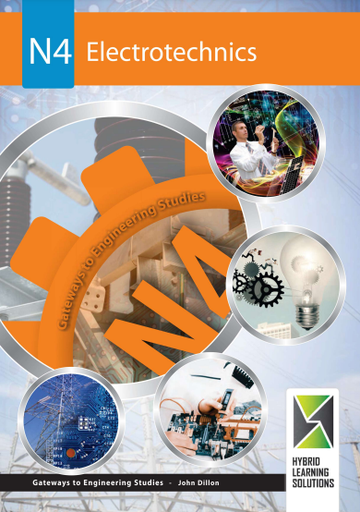
N 4,500
Electrotechnics N4 is one of many publications introducing the gateways to Engineering Studies. This ebook is designed to develop the skills for learners that are studying toward an artisanship in Electronics related fields and to assist them to achieve their full potential.
This ebook, with its modular competence-based approach, is aimed at assisting facilitators and learners alike. With its comprehensive understanding of the engineering construction environment.
Author: John Dillon, Hybrid Learning Solutions
Yes, indeed! You can access the first chapter of this ebook for review prior to making a purchase.
Upon purchasing this ebook, you will be granted full access for a period of one year.
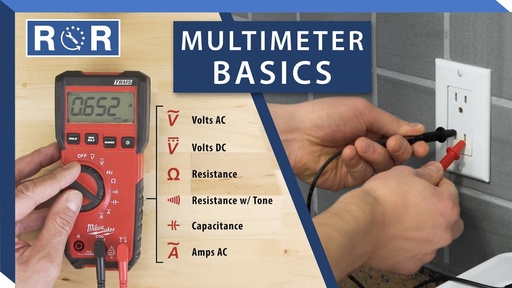
FREE
This video provides an introduction to the fundamentals of electricity, including voltage, current, and resistance, and explains how multimeters work. It also covers the various settings of multimeters and how they can be used to test continuity, voltage, resistance, and amps in electrical components. The video also emphasizes important safety tips when working with live voltage and advises leaving current testing to the professionals.
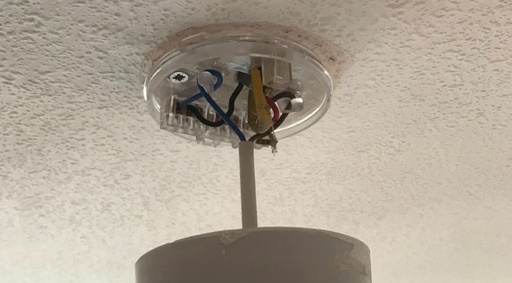
FREE
This video provides a detailed guide on how to wire a ceiling rose for a light fitting. It covers the different components of a ceiling rose, including the line connector and switch live connector, and warns about the importance of turning off the power circuit before working on the ceiling rose. The video demonstrates how to correctly identify the wires that belong to the main lighting circuit and how to wire up the ceiling rose with a light fitting. It emphasizes the importance of testing connections and tightening screws before replacing the lid. The second section of the video shows how to safely wire a ceiling rose and check the correct placement of wires before turning on the power.

FREE
Electrical Level 1, 2, and 3 are job-oriented vocational training programs that aim to impart knowledge and skills related to electrical systems. These programs are based on the National Skills Qualification Framework (NSQF) and are designed to provide practical training in the field of electrical technology. Level 1 covers the basic concepts of electrical systems, safety procedures, and installation techniques. Level 2 focuses on advanced electrical installation, maintenance, and troubleshooting. Level 3 is a specialized program that includes training in renewable energy systems and automation technologies. The courses are structured to provide both theoretical and practical training to students, with an emphasis on hands-on experience. Successful completion of these programs can lead to employment opportunities in a variety of industries that require skilled electrical technicians.
National Occupational Standards for Construction/Building Trades in Nigeria - Electrical Levels 1, 2 & 3
Approved by the National Board for Technical Education (NBTE) - National Skills Qualification (NSQ).
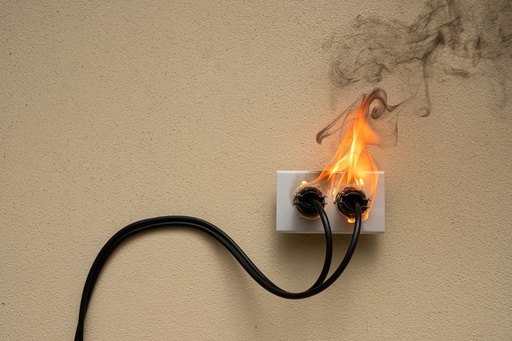
FREE
This is a free public 1-hour webinar about some best practices in workplace electrical safety, based on the 2021 NFPA 70E standard - USA
National Fire Protection Association - NFPA 70E requirements for safe work practices to protect personnel by reducing exposure to major electrical hazards. Originally developed at OSHA's request, NFPA 70E helps companies and employees avoid workplace injuries and fatalities due to shock, electrocution, arc flash, and arc blast, and assists in complying with OSHA 1910 Subpart S and OSHA 1926 Subpart K.
Topics discussed will include:
- What are the hazards of electricity?
- The 8 steps for verifying an electrical circuit is de-energized
- Steps to follow for a proper lockout/tagout procedure
- How often should lockout/tagout training
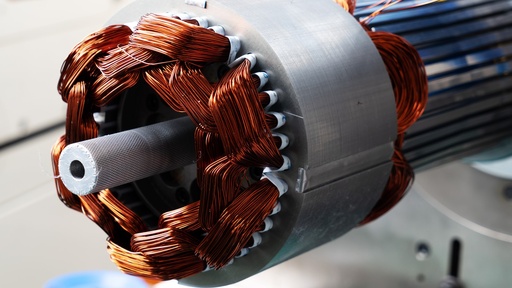
FREE
The "Electric Motors Troubleshooting and Maintenance Techniques" webinar discusses a variety of topics related to electric motors, such as the importance of being qualified before troubleshooting, different types of motors and their basic parts, using a multimeter to check windings, and troubleshooting and maintenance techniques. The instructors also cover the megohm test for a motor's windings, common causes of motor failure, and the hazards of misusing capacitors. They emphasize the importance of proper greasing for bearing maintenance and following the manufacturer's instructions carefully.
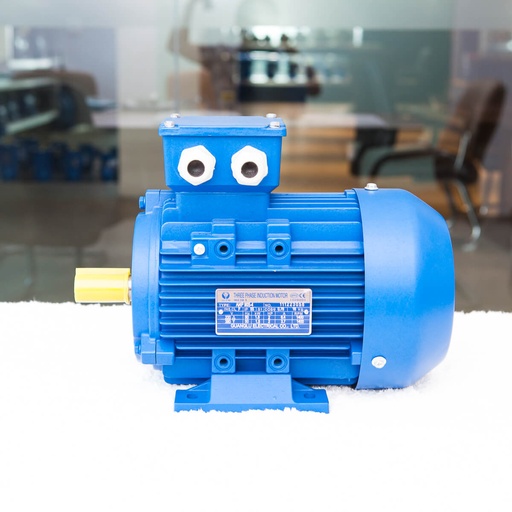
FREE
The term “3-phase” is used often in commercial and industrial applications, but the term is commonly misunderstood. In this free public 1-hour webinar, will break down 3-phase power and how it works.
Topics discussed include:
- Why do we use 3-phase power in today’s society? What are its benefits?
- How is 3-phase power transmitted and conducted through cities and facilities?
- How to understand multimeter readings on wires in a 3-phase electrical panel
- A brief overview of 3-phase terminology, such as power factor and kVA ratings
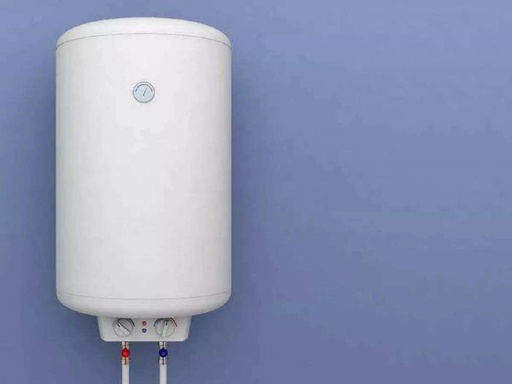
FREE
In this free three-part video, a TVET instructor discusses the Electric Hot Water Tank, and how it is serviced.
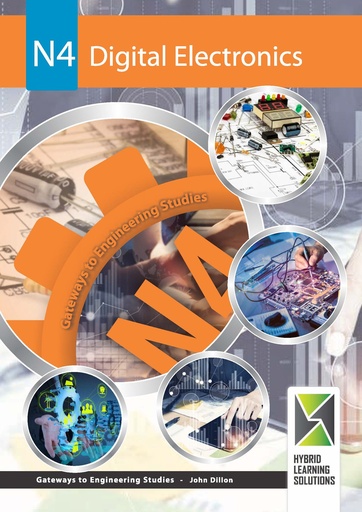
N 4,500
Digital Electronics is one of many publications introducing the gateways to Electrical Studies. This ebook is designed to develop the skills for learners that are studying toward an artisanship in electronics related fields and to assist them to achieve their full potential.
This ebook, with its modular competence-based approach, is aimed at assisting facilitators and learners alike. With its comprehensive understanding of the engineering construction environment.
Author: John Dillon, Hybrid Learning Solutions
Yes, indeed! You can access the first chapter of this ebook for review prior to making a purchase.
Upon purchasing this ebook, you will be granted full access for a period of one year.
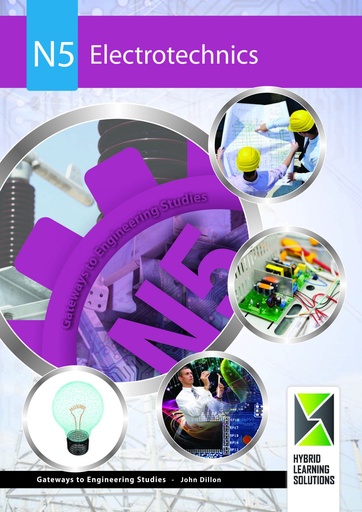
N 4,500
Electrotechnics N5 is one of many publications introducing the gateways to Engineering Studies. This ebook is designed to develop the skills for learners that are studying toward an artisanship in Electronics related fields and to assist them to achieve their full potential.
This ebook, with its modular competence-based approach, is aimed at assisting facilitators and learners alike. With its comprehensive understanding of the engineering construction environment.
Author: John Dillon, Hybrid Learning Solution
Yes, indeed! You can access the first chapter of this ebook for review prior to making a purchase.
Upon purchasing this ebook, you will be granted full access for a period of one year.
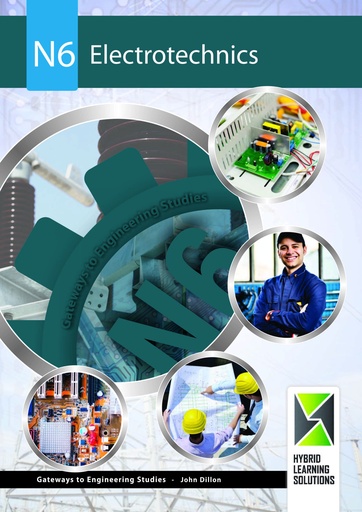
N 4,500
Digital Electronics N5 is one of many publications introducing the gateways to Engineering Studies. This ebook is designed to develop the skills for learners that are studying toward an artisanship Electronics related fields and to assist them to achieve their full potential.
This ebook, with its modular competence-based approach, is aimed at assisting facilitators and learners alike. With its comprehensive understanding of the engineering construction environment.
Author: John Dillon, Hybrid Learning Solutions
Yes, indeed! You can access the first chapter of this ebook for review prior to making a purchase.
Upon purchasing this ebook, you will be granted full access for a period of one year.
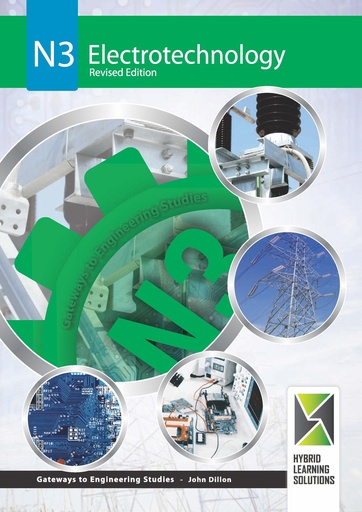
N 4,000
Electrotechnology N3 Revised is one of many publications introducing the gateways to Engineering Studies. This ebook is designed to develop the skills for learners that are studying toward an artisanship in Electrical or Electronics related fields and to assist them to achieve their full potential.
This ebook, with its modular competence-based approach, is aimed at assisting facilitators and learners alike. With its comprehensive understanding of the engineering construction environment.
Author: John Dillon, Hybrid Learning Solutions
Yes, indeed! You can access the first chapter of this ebook for review prior to making a purchase.
Upon purchasing this ebook, you will be granted full access for a period of one year.
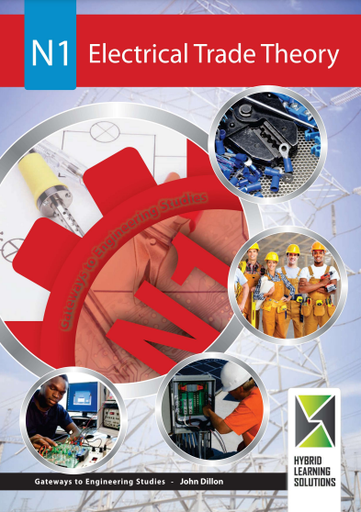
N4,000
N1 Electrical Trade Theory is one of many publications introducing the gateways to Engineering Studies. This ebook is designed to develop the skills for learners that are studying toward an artisanship in electrical related fields and to assist them to achieve their full potential.
This ebook, with its modular competence-based approach, is aimed at assisting facilitators and learners alike. With its comprehensive understanding of the engineering construction environment.
The subject mater is presented as worked examples in the problem-solving-result methodology sequence, supported by numerous and clear illustrations. Practical activities are included throughout the book. The author is one who is well known and respected in the manufacturing, engineering and related technology fields. Their extensive experience provides an excellent base for further study, as well as a broad understanding of the technology and the knowledge to succeed.
Author: John Dillon, Hybrid Learning Solutions
Yes, indeed! You can access the first chapter of this ebook for review prior to making a purchase.
Upon purchasing this ebook, you will be granted full access for a period of one year.
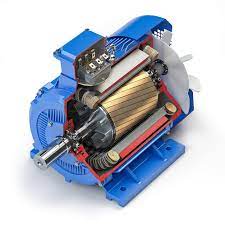
FREE
The video "How does an Electric Motor Work? (DC Motor)" explains the basics of electricity and magnetism to help understand how an electric motor works. The video demonstrates the creation of an electromagnet. It explains the function of a commutator in a DC motor, which switches the electromagnet's polarity on the armature as it spins. The number of loops on the armature determines the motor's torque, and the spinning motion can be converted into different types of movement to power devices. The video also promotes Brilliant, an educational website offering courses on math and science, including electricity and magnetism.
Electric motors can seem very mysterious! How do they use electricity to start rotating? Let's break it down step by step to understand how it works. Topics covered in this video: circuits, current, magnets, electromagnets, armature, commutator, brushes, stator, and rotor. This video only covers DC motors.
Author: Jared Owen
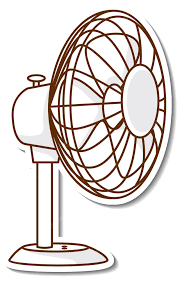
FREE
That table top fan that you use is more interesting than you think! I took mine apart to see how it works. The "four speed mechanism" releases any other button that was previously pressed down. Once a button is pressed a signal (voltage) is sent to the motor at the top of the fan. The oscillation motion is produced through the 4 bar mechanism.
The last part of the video covers the gears that turn the 4 bar mechanism. The pin is part of the gears - when it is lifted the gears don't connect and the fan will no longer oscillate back and forth.
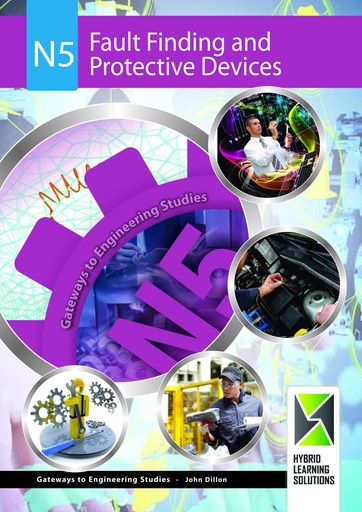
N 4,500
N5 Fault Finding and Protective Devices is one of many publications introducing the gateways to Engineering Studies. This ebook is designed to develop the skills for learners that are studying toward an artisanship in electrical related fields and to assist them to achieve their full potential.
This ebook, with its modular competence-based approach, is aimed at assisting facilitators and learners alike. With its comprehensive understanding of the engineering construction environment.
The subject mater is presented as worked examples in the problem-solving-result methodology sequence, supported by numerous and clear illustrations. Practical activities are included throughout the book. The author is one who is well known and respected in the manufacturing, engineering and related technology fields. Their extensive experience provides an excellent base for further study, as well as a broad understanding of the technology and the knowledge to succeed.
Author: John Dillon, Hybrid Learning Solutions
Yes, indeed! You can access the first chapter of this ebook for review prior to making a purchase.
Upon purchasing this ebook, you will be granted full access for a period of one year.
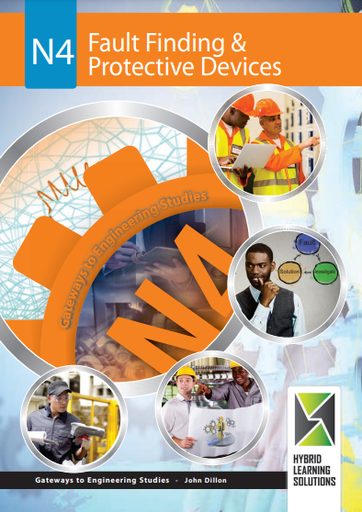
N 4,500
N4 Fault Finding and Protective Devices is one of many publications introducing the gateways to Engineering Studies. This ebook is designed to develop the skills for learners that are studying toward an artisanship in electrical related fields and to assist them to achieve their full potential.
This ebook, with its modular competence-based approach, is aimed at assisting facilitators and learners alike. With its comprehensive understanding of the engineering construction environment.
The subject mater is presented as worked examples in the problem-solving-result methodology sequence, supported by numerous and clear illustrations. Practical activities are included throughout the book. The author is one who is well known and respected in the manufacturing, engineering and related technology fields. Their extensive experience provides an excellent base for further study, as well as a broad understanding of the technology and the knowledge to succeed.
Author: John Dillon, Hybrid Learning Solutions
Yes, indeed! You can access the first chapter of this ebook for review prior to making a purchase.
Upon purchasing this ebook, you will be granted full access for a period of one year.
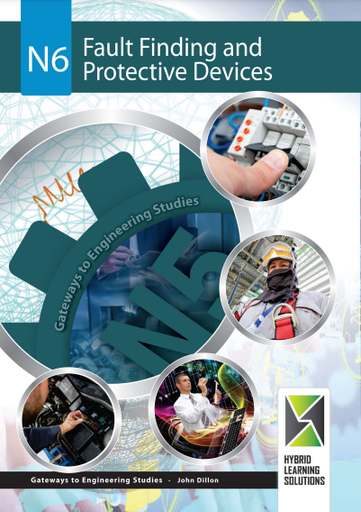
N 4,500
N6 Fault Finding and Protective Devices is one of many publications introducing the gateways to Engineering Studies. This ebook is designed to develop the skills for learners that are studying toward an artisanship in electrical related fields and to assist them to achieve their full potential.
This ebook, with its modular competence-based approach, is aimed at assisting facilitators and learners alike. With its comprehensive understanding of the engineering construction environment.
The subject mater is presented as worked examples in the problem-solving-result methodology sequence, supported by numerous and clear illustrations. Practical activities are included throughout the book. The author is one who is well known and respected in the manufacturing, engineering and related technology fields. Their extensive experience provides an excellent base for further study, as well as a broad understanding of the technology and the knowledge to succeed.
Author: John Dillon, Hybrid Learning Solutions
Yes, indeed! You can access the first chapter of this ebook for review prior to making a purchase.
Upon purchasing this ebook, you will be granted full access for a period of one year.